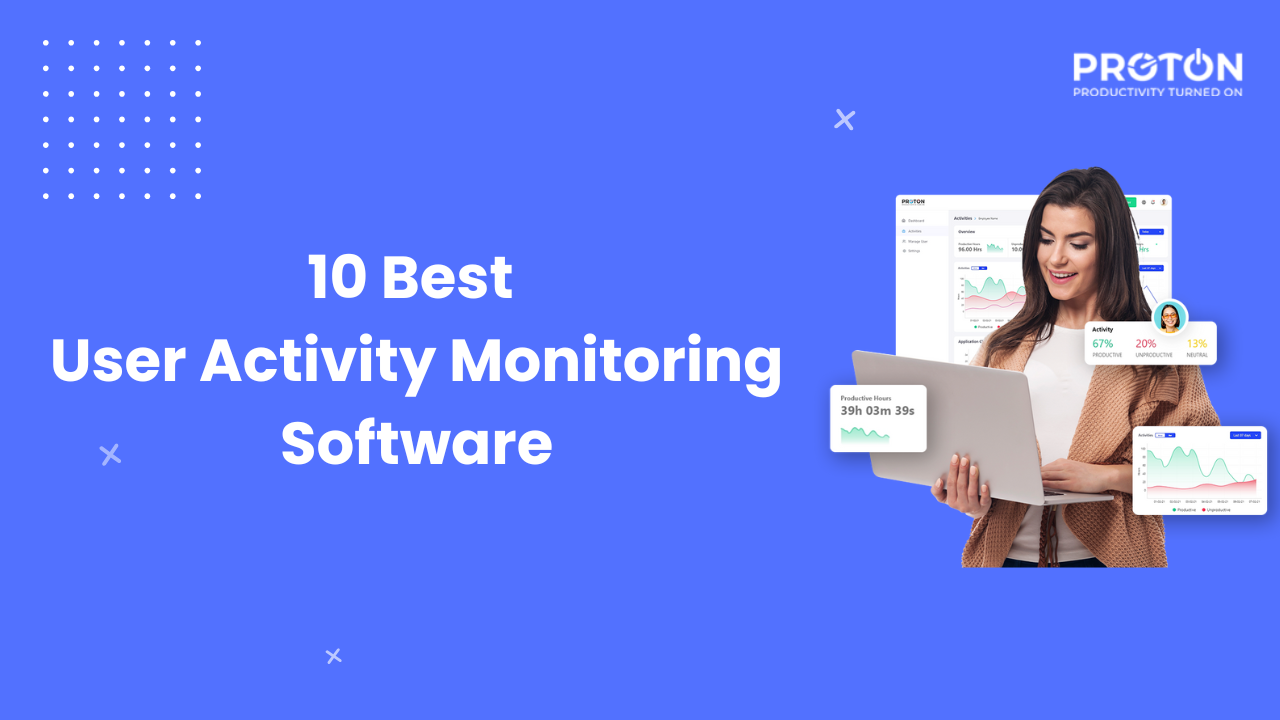Imagine your organization operating at its peak efficiency—every process streamlined, every team member engaged.
That’s what effective productivity monitoring can help you achieve.
In this guide, we’ll show you how to implement productivity monitoring tools that not only track performance but also improve your team’s efficiency.
Let’s start by understanding why monitoring is crucial for your organization’s growth.
Understanding the Need for Productivity Monitoring
Why invest in productivity monitoring?
It’s to make sure your team is working effectively and not just hard.
Monitoring tools provide data that help you see where time and resources are spent and often wasted. With these insights, you can make the right decisions to boost overall productivity.
For example, imagine discovering that your team spends a large chunk of their day on tasks that could be automated. Or you may find that meetings take up more time than they’re worth.
Productivity monitoring tools can highlight these inefficiencies so you can adjust workflows, reduce unnecessary meetings, and allocate resources more effectively to improve performance and job satisfaction.
Moreover, when employees know their work is being measured, they often tend to stay more focused and align their efforts with the company’s goals.
Communicating the Purpose and Benefits
As we explore how to communicate the purpose and benefits of introducing productivity monitoring tools, it’s important to focus on the positives and highlight how these tools will help everyone work better, not harder.
Let’s look at the key points to ensure your team understands and does not mistake productivity monitoring as another unreasonable company policy.
Set Clear Objectives
Be clear when defining what you hope to achieve with productivity monitoring.
Whether improving time management, enhancing work quality, or aligning tasks more closely with business goals, be upfront about these objectives. It will significantly help to set a constructive tone with the employees.
Promote Transparency
Openly discuss the monitoring tools you will use and explain how they will be used.
Make it clear that the purpose is to support employees in their work and not to invade privacy or micromanage. You can even encourage questions and feedback to understand the employees’ sentiments and address any concerns they might have.
Highlight the Benefits
Focus on explaining how productivity monitoring can benefit employees, such as by identifying areas where they excel and opportunities for training and development.
Show how these tools can lead to a more efficient work environment and potentially more rewarding work experiences.
Ensure Privacy and Trust
Be transparent about what data will be collected and how it will be used. Assure your employees that their personal information is protected and that monitoring is done fairly and respectfully.
Involve Employees in the Process
Invite input from employees on how the system should be used and consider their feedback before rolling out your final decision. It will not only make them feel on the same page with you and help mitigate any resistance. It will make your employees feel they are a part of the process rather than just subjects of it.
Continuously Evaluate and Adapt
After the initial implementation, be open about evaluating how it’s working for your employees. Other than that, regularly review the impact of productivity monitoring and make changes based on employee feedback and the organization’s evolving needs.
Selecting the Right Productivity Monitoring Tools
The right tools should seamlessly integrate into your workflows, enhance employee performance, and respect privacy, all while fitting within your budget.
Let’s explore how to find a tool that matches your team’s specific needs and helps push your operations to the next level.
Define Your Objectives
Whether it’s enhancing focus, reducing downtime, or streamlining communication, your tool should directly address these goals.
Key Features and Integration
Opt for tools that provide essential features like real-time analytics, comprehensive reporting, and seamless integration with other platforms. Look for tools that not only track time but also offer insights into productivity patterns and can integrate with other systems.
User-Friendliness and Support
A tool is only as good as its usability. Select software that is intuitive and comes with strong customer support to ensure smooth implementation and ongoing use.
Cost Efficiency
Analyze the pricing models of various tools. Many offer scalable options that provide different tiers based on features and team size, allowing you to choose a plan that best suits your budget and needs.
Compliance and Security
Ensure that the tool adheres to legal standards for privacy and data security. This is crucial for protecting sensitive information and maintaining trust within your team.
Trial Periods and Feedback
Use free trials to test how well the tool fits your organizational environment. It will help you understand the tool’s impact on your team’s workflow and gather feedback to make an informed decision.
Considering all these factors, Proton is a practical choice that meets the multifaceted demands of modern businesses that want to enhance their productivity monitoring practices.
Proton offers a robust set of features that cater to diverse business needs. It excels in real-time data monitoring and has strong integration capabilities with popular platforms like Salesforce and Microsoft Teams, which can be crucial for maintaining workflow continuity.
Its user-friendly interface simplifies the adoption process across departments, and its scalable solutions also accommodate business growth without you having to switch to another tool as needs evolve.
Establishing Clear Policies and Guidelines
When setting up productivity monitoring in your organization, let everyone know exactly what’s being monitored and why. Explain how it can improve processes and also safeguard the workplace.
If you operate internationally, make sure your policies align with privacy laws like GDPR to protect both your team and your business. Also, involve key stakeholders from HR, legal, IT, and a few employee representatives when drafting these policies.
Lastly, invest time in training your staff about these policies. It’s important they understand not just the ‘what’ and the ‘how’ but also the ‘why’ behind the monitoring. This clarity will help you build trust and will make the implementation smoother and more accepted.
Providing Training and Support
To ensure your team effectively adopts productivity monitoring software, focus on these essentials:
- Deliver training that covers all the essential features. Make sessions interactive to engage employees and address their queries in real-time.
- Provide continuous access to support and learning materials, such as FAQs and online tutorials, to help employees adapt to updates and deepen their understanding.
- Establish a feedback loop to hear employees’ experiences and suggestions. Use this input to refine the training process and software usage.
Monitoring Progress and Evaluating Impact
To effectively evaluate the impact of productivity monitoring, start by setting specific objectives aligned with your organizational goals.
Collect and analyze performance data to gauge progress.
Use this data in review sessions with key stakeholders to identify areas for improvement and adapt strategies accordingly.
Finally, ensure outcomes and adjustments are well-documented and communicated across the organization to maintain transparency and support continuous improvement.
Conclusion
Successfully introducing productivity monitoring into your organization hinges on a few key strategies: clear communication, careful selection of tools, and a firm commitment to transparency and ethics.
Remember, the ultimate goal is fostering a culture of productivity and accountability. And as you move forward, keep evaluating and adjusting your approach based on real feedback from your team.


